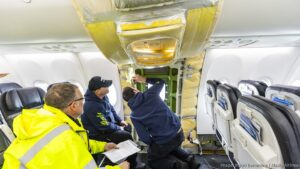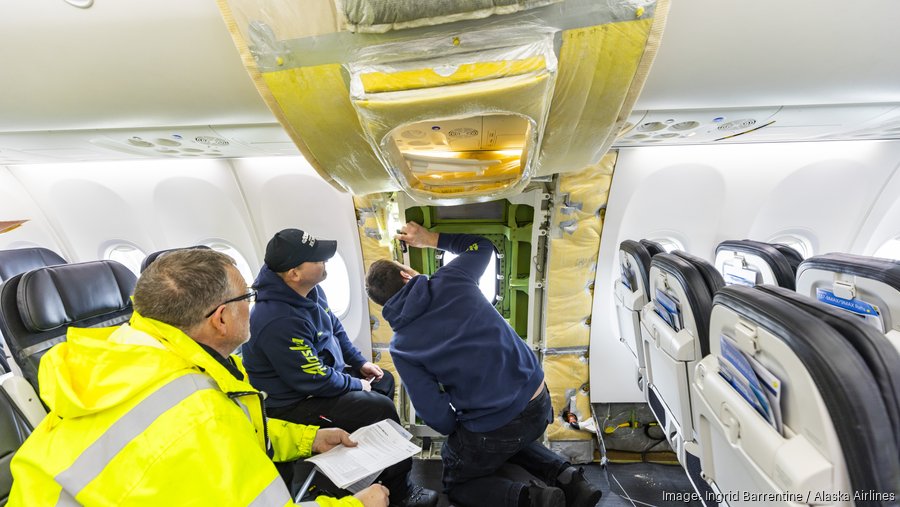Article published in the Philadelphia Business Journal on February 4, 2024.
The Jan. 5 failure of a fuselage door plug on an Alaska Airlines Boeing 737 Max 9 aircraft is the latest incident demonstrating that safety must be a mission critical imperative at Boeing.
The door plug blew off at 16,000 feet after the aircraft departed from Portland, Oregon, resulting in cabin depressurization. Fortunately, there were no fatalities and the plane was able to return to the airport. This was the third serious incident of a Max 8/9 aircraft in six years.
In October 2018, a Lion Air 737 Max 8 crashed, resulting in 189 fatalities, and in March 2019, an Ethiopian Airlines Max 8 crashed, resulting in 157 fatalities. Both crashes were due to operational problems with the new MCAS system, which controlled the pitch of the aircraft.
Pilots were not informed of the new MCAS system. Max 8/9 aircraft were grounded for nearly two years while the MCAS system was modified and rigorously tested, and pilots properly trained on the system.
There are few better ways to kill the trust and confidence in Boeing and the Max 8/9 aircraft than to have two fatal crashes, followed by what could have been an equally serious incident, within a six-year period.
In a Jan 4. column, The Seattle Times aerospace reporter Dominic Gates wrote that two sources within Boeing have indicated that it was Boeing mechanics who improperly reinstalled the door plug originally installed by Spirit AeroSystems, the Boeing contractor who built the fuselage. Self-identified as a whistleblower, one of those sources has alleged, “The reason the door blew off is stated in black and white in Boeing’s own records. It is also very, very stupid and speaks volumes about the quality culture at certain portions of [Boeing’s] business.”
All Max 9 aircraft were grounded shortly after the Jan. 5 Alaska Airlines incident to allow door plug assemblies to be inspected, causing passenger travel disruptions. The first Max 9 aircraft to return to service was on Jan. 26.
The reactions within the airline industry to the Alaska Airlines incident were as expected. Quoting Alaska Air Group CEO Ben Minicucci, “It’s not acceptable what happened. We’re going to hold Boeing’s feet to the fire to make sure we get good airplanes out of that factory.”

United CEO Scott Kirby said, “… I’m disappointed that the manufacturing challenges do keep happening at Boeing. … I think this is the straw—the Max 9 grounding—is probably the straw that broke the camel’s back for us. We’re going to at least build a [future aircraft] plan that doesn’t have the Max 10 in it.” United is now considering ordering Airbus A321neos in place of the Max 10.
Quoting Richard Aboulafina, managing director of AeroDynamic Advisory, an aerospace consulting firm, “People are focused on one incident, which is embarrassing. But it’s actually been a series of incidents and it’s worse than that. … It’s a broader company problem. [It’s a] management culture that under-resources and misunderstands what the people who build the planes actually need to do their job.”
Boeing CEO Dave Calhoun was hired to fix the culture responsible for the Lion Air and Ethiopian Airlines incidents. He fell short. Is he the right CEO to lead Boeing?
On Jan. 10, Calhoun addressed his employees regarding the Alaska Airlines incident. In an NBC News video of his emotional remarks, Calhoun said, “I got kids, I got grandkids, and so do you. This stuff matters. Everything matters. Every detail matters.”
I scoured the Internet for references to Calhoun’s town hall meetings with Boeing front line factory employees, and couldn’t find any. That doesn’t mean they are not occurring. The only article I found was about a Jan. 17 town hall meeting with the employees of Spirit AeroSystems, the contractor that builds the 737 Max fuselages. At town hall meetings, Calhoun needs to dialogue with Boeing and contractor employees and ask them what is standing in the way of fulfilling the mission critical imperative of building safe aircraft.
Calhoun’s remarks that were captured by NBC News must be communicated to all Boeing and contractor employees and made part of Boeing’s corporate culture.
Paraphrasing Calhoun’s remarks: “We build our aircraft as if our kids and grandkids were going to be flying on them.” This is the mindset every Boeing and contractor employee should have. This should be Boeing’s mission statement, and is an important element of Calhoun’s tone at the top.
Stan Silverman is founder of Silverman Leadership and author of “Be Different! The Key to Business and Career Success.” He is also a speaker, advisor and widely read nationally syndicated columnist on leadership. He can be reached at stan@silvermanleadership.com.

